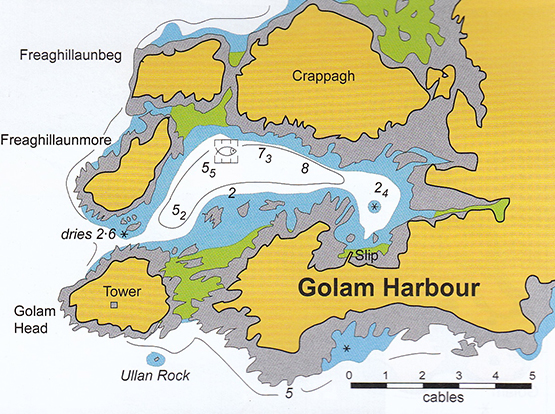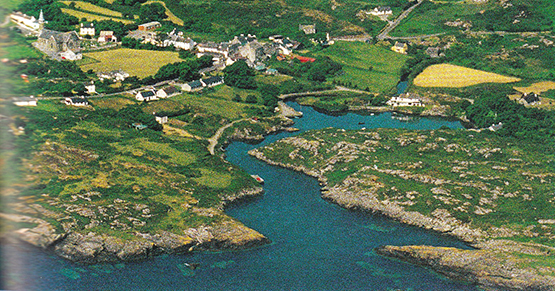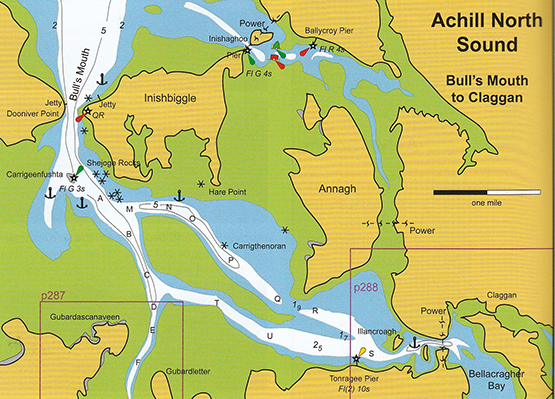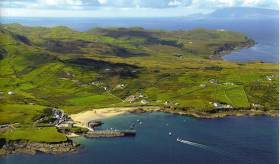Displaying items by tag: sailing direction
The ultimate dreamworks for those who cruise the Irish coast, or indeed those who just hope to do so one day, has been reaching distributors and subscribers this week with the 14th Edition of the Irish Cruising Club’s Sailing Directions for the South & West Coasts of Ireland coming hot off the press writes W M Nixon.
It’s only three years since the 13th Edition was published, but as Ireland emerges from recession, new harbour developments are taking place. And as well, Honorary Editor Norman Kean, ably assisted by his wife Geraldine Hennigan, is constantly up-dating information, and receiving input from ICC members and other interested folk in all sorts of out of the way places, adding to the already enormous shared stock of top class local knowledge about harbours and anchorages large and small.
The book is available to purchase directly from distributors Todd Navigation via the Afloat marketplace here.
In this age of electronic navigation, it may surprise some that there is a continuing demand for new editions of a book which was first compiled by the great Harry Donegan of Cork in 1930, and he in turn had been collating information, and making harbour charts aimed at the needs of cruising enthusiasts, since 1912.

With clear chartlets like this, the ICC makes secret anchorages such as Golam Harbour on the south coast of Connemara accessible to cruising folk from other areas. Courtesy ICC
But in fact this history going back more than a hundred years is part of the book’s attraction. And despite today’s gadgetry, no serious cruising person would contemplate heading off for a detailed venture along the Irish coast without a copy of it on board.
The mixture of technical information well leavened with clear charts and evocative photographs has improved steadily over the years, and the Foreword from Roger Millard, the recently-retired Regional Geographic Manager at the Admiralty Hydrographic Office, neatly encapsulates the high regard in which the ICC Directions are held, as he comments: “Although aimed at small-craft users, it has many admirers from major maritime institutions”.
His Foreword’s conclusion provides a warmth of support beyond professional admiration. Having listed the Directions’ special features of invaluable assistance to small craft users, he concludes: “On top of these advantages, I find it a fascinating read, and I am sure you will enjoy it”.

Goleen in far West Cork is known as a port of call to very few, even though the holiday traffic to Barleycove and Crookhaven barrels through the village every day. Courtesy ICC
While those of us who have cruised the coastlines involved many times will find pleasure in visiting old haunts as they now appear, one of two places where the new book has seen detailed fresh research have been that strange unknown area between Achill Island and Belmullet, a large yet secret location where the noted smuggler Captain James Mathew from Rush in Fingal used to anchor his ship in the 1830s, and small craft would emerge from every nook and cranny nearby. Those aboard each currach would be carrying dockets bought from Mathew’s agents ashore which, once they reached the ship, they could exchange for punitively taxed goods without any money actually changing hands. It was all extremely businesslike, yet the legendary Captain Mathews was chased to his destruction by the Revenue cutters off Donegal in an October storm.

The northern area of Achill Sound is one of the areas re-surveyed for the new Sailing Directions, and some previously unlisted anchorages have been detailed. Courtesy ICC
The other area getting the special Keane-Hennigan update is the south coast, eastward of Cork. Regular Afloat.ie visitors recently will be aware of the remarkable photo of Blind Harbour on the Waterford coast which they obtained with their Warrior 40 Coire Uisge anchored in this extraordinary gap in the cliffs. But as this coastline is much transitted by the large fleets from the East Coast trying to reach the promised cruising land of the Southwest, the good news is that Dunmore East is dredged and looking forward to further developments which will be more friendly to recreational boat users, Kilmore Quay is better run than ever, a real trophy facility for Wexford County Council, and even the utterly utilitarian ferry port of Rosslare – sometimes a crucial facility for small craft trying to negotiate Ireland’s tricky southeast corner – has been showing a friendlier attitude to boats in need in recent summers.
And yes, I know that strictly speaking Rosslare is not on the south coast, let alone the west coast. But the fact that it gets included shows the generously informative approach which the Editor and his team have taken with this fine book, which retails at €33.75.
Buy the book HERE





























































